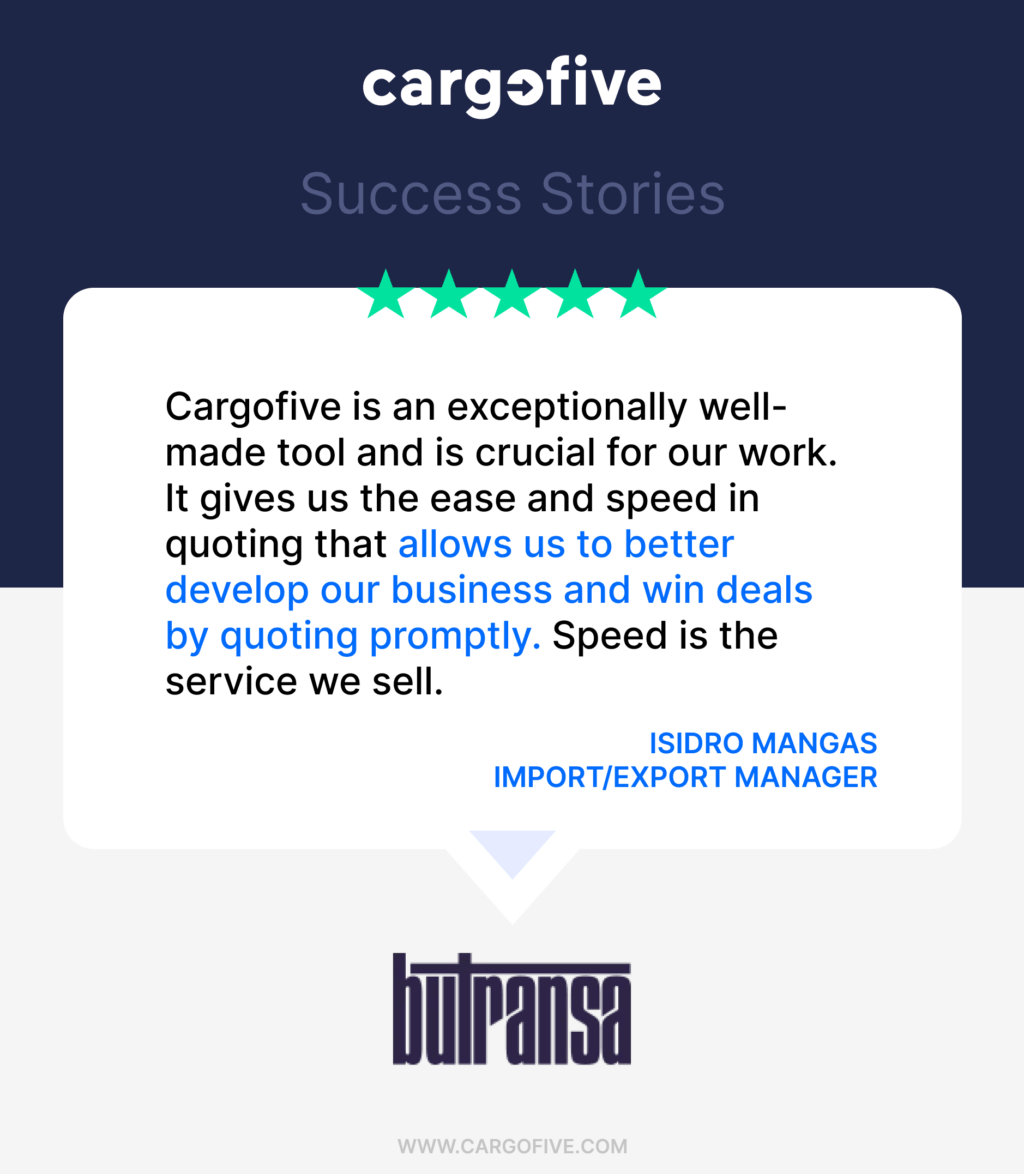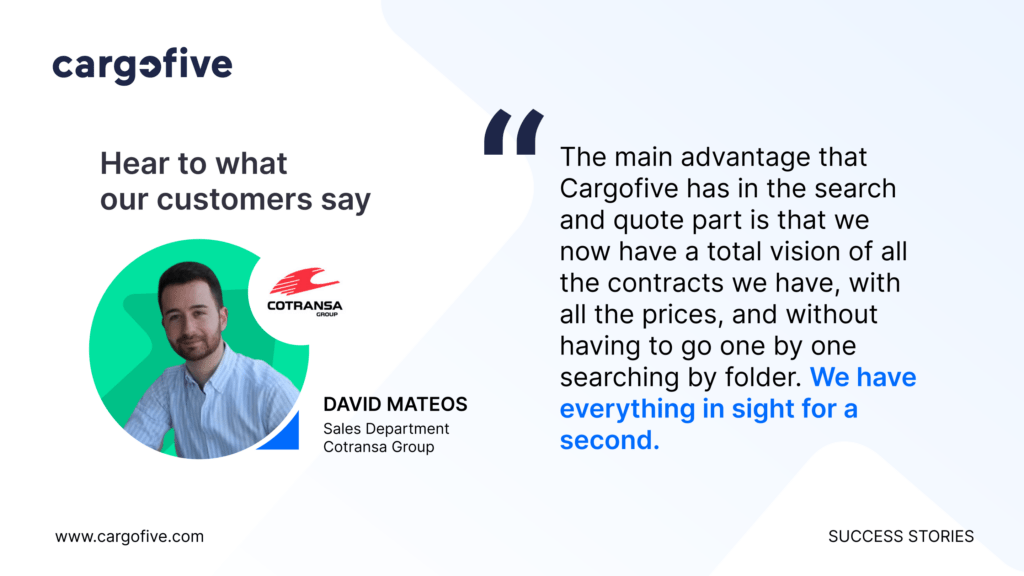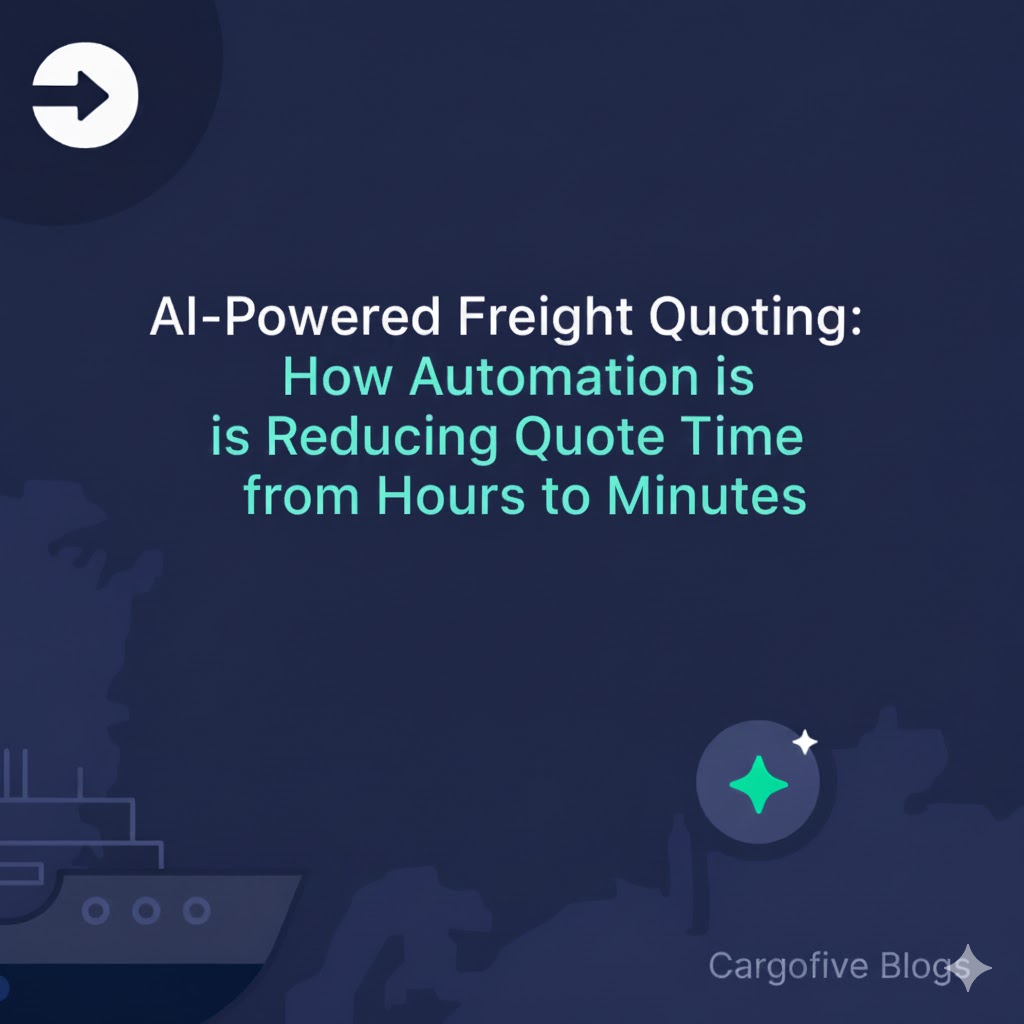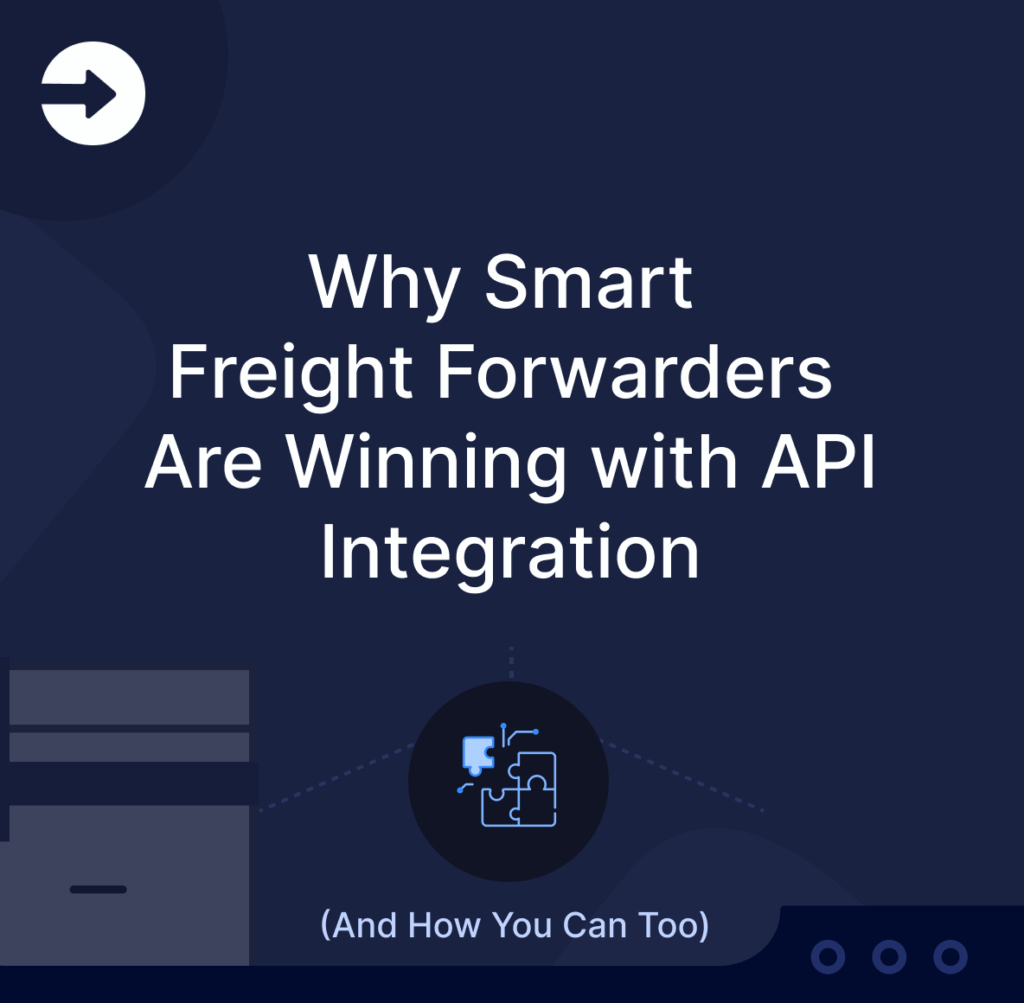
Want to cut freight forwarding costs by 17% and save 61% in processing time?
Workflow automation makes this possible by replacing manual tasks with efficient digital processes.
Freight forwarders can streamline rate management, quote generation, and contract handling, reducing errors and improving productivity.
Key Benefits of Automation:
- Lower Costs: 17% reduction in operational expenses.
- Time Savings: 61% faster processing.
- Better Accuracy: Minimized errors with automated data entry.
- Improved Efficiency: Real-time rate updates and centralized data access.
How to Get Started:
- Identify repetitive tasks (e.g., rate management, quote generation).
- Choose software with features like real-time updates and system integration.
- Provide targeted training for quick adoption.
Freight forwarders using tools like Cargofive report improved decision-making, faster operations, and enhanced customer service. Start automating today to stay competitive and grow your business.

Understanding Freight Forwarding Automation
Freight forwarding automation replaces outdated, manual tasks with efficient digital processes.
By digitizing core workflows, freight forwarders can cut costs and reduce errors.
These systems eliminate the need for paperwork and manual data entry, creating smoother operations and improving overall efficiency.
Main Automation Functions
Modern automation platforms handle tasks that were once done manually. They process shipping documents, calculate rates, and update contracts with ease.
Platforms like Cargofive, for instance, have managed over 100,000 contracts and supported more than 5 million rate searches.
Here’s how automation transforms key functions:
| Function | Traditional Method | Automated Approach |
|---|---|---|
| Rate Management | Spreadsheets and physical file folders | Centralized digital database with real-time updates |
| Contract Processing | Paper filing and manual updates | Smart contract processing tools |
| Quote Generation | Manual calculations and document creation | Instant quotes with automated calculations |
| Document Handling | Physical storage and manual filing | Digital storage and processing |
These changes not only simplify day-to-day operations but also create opportunities for further process improvements.
Key Process Improvements
David Mateos from Cotransa Group’s sales team explains the benefits:

Automation brings noticeable improvements in several areas:
- Real-Time Rate Access: Pricing is centralized and updated instantly, ensuring accuracy and speed.
- Smart Contract Management: Diverse contract formats are standardized, making comparisons simple.
- Seamless Integration: Automation tools connect shipping lines with ERP/TMS systems, reducing duplicate entries and minimizing errors.
According to industry data, freight forwarders using automation solutions report up to 61% time savings in their operations.
Cost Reduction Through Automation
Automation can help lower operational costs by 17%. These savings come from targeted upgrades in essential areas of business operations.
Reducing Errors
Manual tasks often lead to expensive mistakes. Automation minimizes these risks by validating rates in real-time and automating data entry.
This ensures consistent accuracy throughout operations, safeguarding your financial outcomes.
Better Use of Employee Time
By automating repetitive tasks, employees can dedicate their time to more strategic and impactful work, cutting processing time by up to 61%.
For example, MPG‘s automated rate management system allowed teams to shift their focus to tasks that add more value. Centralized data further supports smarter decision-making.
Improved Data Access
Centralized and real-time data access offers immediate advantages.
It simplifies rate comparisons, enhances contract evaluation, and improves performance tracking. This leads to quicker, well-informed decisions while maintaining precision.
These combined benefits not only reduce daily expenses but also improve how resources are managed over time.
Setting Up Automation Systems
Process Review
Start by mapping out your current operations. List tasks like:
- Manual data entry
- Rate management
- Contract processing
- Quote generation
This step helps pinpoint areas where automation can save time and reduce errors. Focus on tasks that slow down operations or lead to mistakes.
Once you’ve identified these problem areas, you can choose tools designed to address them.
Software Selection
With workflows mapped, the next step is finding software that replaces repetitive tasks.
Look for tools offering features like:
| Feature Category | Key Capabilities | Business Benefits |
|---|---|---|
| Rate Management | Real-time updates, carrier links | Quicker quote generation |
| Contract Processing | Smart handling, flexible formats | Less manual work |
| System Integration | ERP/TMS connections, API support | Smoother processes |
| Data Analysis | Performance tracking, reports | Informed decision-makin |
System Setup and Training
Start with a pilot program in one department to quickly identify and resolve issues.
Key setup steps include:
- Planning data migration
- Integrating with existing systems
- Setting user access levels and security
- Establishing backup procedures
Offer practical training focused on daily tasks. Create easy-to-follow guides for common operations and schedule regular check-ins to address questions or gaps.
Early training and support can speed up adoption and help realize up to 61% time savings and 17% cost reductions in operation.
These steps ensure your automation system is ready to deliver results and improve efficiency across your business.

Measuring Automation Results
Performance Metrics
To evaluate the success of your automation efforts, focus on tracking key performance metrics.
Here’s a breakdown:
| Metric Category | What to Measure | Target Improvement |
|---|---|---|
| Time Efficiency | Speed of quote processing, contract handling time | Up to 61% faster |
| Cost Savings | Operational expenses, labor costs | Around 17% lower costs |
| Process Quality | Error rates, data accuracy | Noticeable reduction in errors |
| Volume Handling | Number of contracts processed, rate searches | Measure growth in capacity |
Data from real-world examples highlights impressive results.
Many businesses report faster processing times, fewer errors, and overall better performance.
These immediate wins pave the way for even greater long-term improvements.
Long-term Business Impact
Automation isn’t just about quick wins – it delivers lasting benefits that ripple across your business.
Streamlined processes and better visibility can lead to smarter decisions, happier customers, and steady growth.
Key areas to watch for long-term impact:
- Customer Satisfaction: Keep an eye on response times and how accurate your quotes are.
- Market Competitiveness: Track metrics like win rates and changes in market share.
- Team Productivity: Evaluate employee efficiency and overall job satisfaction.
- Business Growth: Look at year-over-year revenue increases and profit margin improvements.
Companies that adopt robust automation strategies have reported growth rates surpassing 300% annually. These numbers show how automation can turn operational gains into meaningful business growth.

Conclusion: Next Steps in Automation
Automation has proven to reduce costs and improve efficiency in freight forwarding. Studies show it can save up to 61% of time and lower total operational costs by 17%.
To take advantage of these results, start by reviewing your workflows to identify areas where automation can make the biggest difference.
Focus on tasks like rate management and contract processing, as these manual processes often slow things down.
Experts highlight Digital tools as game-changers for rate management and contract handling.
These platforms allow for quicker, more accurate quoting while cutting costs significantly.
Here’s how you can begin optimizing your operations:
- Select software that works seamlessly with your current systems
- Provide targeted training to ensure quick adoption
- Track key performance indicators to measure your return on investment
- Begin with essential processes, then gradually expand
As digitalization gains momentum, automation is quickly becoming a must-have for staying competitive in the freight forwarding industry.
AUTHOR



